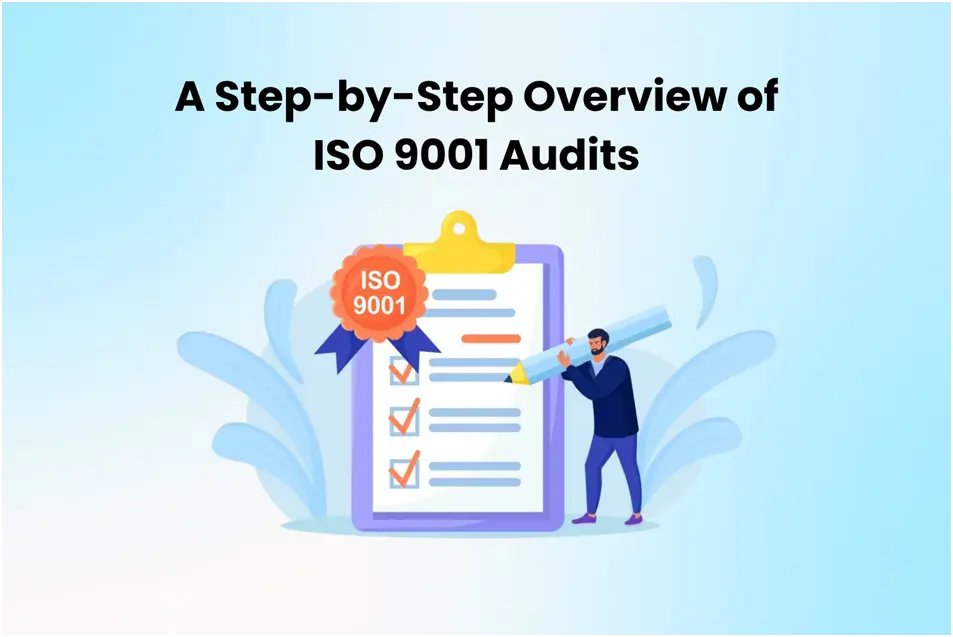
A Step-by-Step Overview of ISO 9001 Audits
The ISO 9001 audit provides organised methods that helps maintain the efficiency of a company’s quality management system (QMS). The audits must be in line with the quality standards set by the International Organisation for Standardisation (ISO).
These standards dictate how enterprises can achieve operational efficiency and enhance the quality of their goods and services. This adherence improves their clients’ happiness. Professionals can use an ISO 9001 Course to learn about What is ISO 9001 and its audits. This blog goes through a detailed overview of the ISO 9001 audit.
Understanding ISO 9001
ISO 9001 outlines the requirements that a quality management system needs to follow. It would thus guide the organisation in working within its limits to ensure that it be able to constantly meet customer needs and improve its operations. The ISO 9001 course helps learn the guiding principles and the prerequisites for the application of the standard. This knowledge guarantees that an organisation will have the capacity to improve its credibility and efficiency.
Steps of the ISO 9001 Audit Process
ISO 9001 helps companies develop and maintain a quality management system that complements their operations. It lays emphasis on very critical areas like risk management, optimisation of procedures, and client satisfaction. The ISO 9001 standards helps the company gain a competitive edge in the industry. It does this by improving consumer trust and increasing operational efficiency.
Step 1: Preparing for the Audit
Careful planning and preparation are required to guarantee audit readiness. This involves evaluating the procedures, quality manuals, and records to ensure that the audit complies with ISO 9001 standards. Moreover, internal audits are done within the organisation to find out any sort of non-conformance and apply corrective measures accordingly. In this consideration, there should be appraisal and training for the procedures and concepts of ISO 9001 among the staff, such that they all are ready for the auditing.
Step 2: Selecting the Audit Team
The success of an ISO 9001 audit is closely dependent on having a good audit crew. The group must contain experienced individuals who has expertise regarding the requirements of quality management systems under ISO 9001. Auditors, both internal and external, are supposed to be on the team to make it unbiased.
Step 3: Conducting the Audit
The audit gives the team the chance to compare the organisation’s QMS against ISO 9001 requirements. Interviews, document reviews, and process observations will be conducted to guarantee compliance. Focus of attention will be brought to any deviations from normalcy or areas of improvement, followed by recommending remedial actions.
Step 4: Reporting and Corrective Action
After the audit, the team shall prepare a detailed report of their conclusions, summarising the results obtained and including the detected non-conformities. This must be acted upon by the organisation by taking corrective measures to prevent them from reoccurring. This could involve the introduction of new procedures, training of personnel, or modification of the existing processes with a view to increasing efficiency.
Step 5: Follow-Up Audit
A follow-up audit would ensure that the QMS of the organisation aligns with the requirements of ISO 9001 and that any required corrective action is taken. This will show that the QMS under the organisation functions properly and the conformities have been eliminated.
ISO 9001 Audit Best Practices
Best practices to improve efficiency and effectiveness always ensure successful management of ISO 9001 audits. The following are some important strategies to consider:
Document Management
Documentation for all the methods and procedures of quality management should be accurate and current. This includes documenting changes, modifications, reviews, and approvals to ensure everything is transparent and can be tracked.
Employee Training
All staff members participating in the ISO 9001 audit process should receive thorough training. This would help ensure that they are apprised of their responsibility and help uphold the ISO 9001 standards. Regular training sessions would also help in keeping the information of employees current, in case there is any update or change in procedures.
Internal Audits
Internal audits should be carried out periodically to explore the areas that would need improvement and whether the quality management system is operating efficiently. Internal audits help identify the potential instances of non-conformity, and these results are communicated to the concerned officials so that corrective measures are taken on time.
Customer Feedback
Ask customers for feedback to determine their satisfaction and what needs to be improved. Feedback from customers can motivate initiatives for ongoing improvement and offer valuable insights into how well the quality management system works.
Management Review
Management reviews at planned intervals will enable you to understand how your quality management system performs and thereby make strategic decisions based on facts and evidence. Management reviews assist in ensuring that the QMS is in alignment with company aims and objectives.
Implementing these best practices into their ISO 9001 audit procedures can strengthen organisations’ efforts to comply with regulations and promote ongoing development in all facets of their business.
Conclusion
In summary, the ISO 9001 audits are instrumental in ensuring that the companies effectively meet the requirements and international standards of quality management systems. Armed with the instructions from this blog, companies can carry out necessary preparations and confidently manage ISO 9001 audits, which will spur continual improvement and customer contentment. Investing in training will demonstrate that the organisation is committed to quality and excellence, whereby beneficial knowledge and skills shall be obtained to help the organisation in achieving and maintaining ISO 9001 certification.
